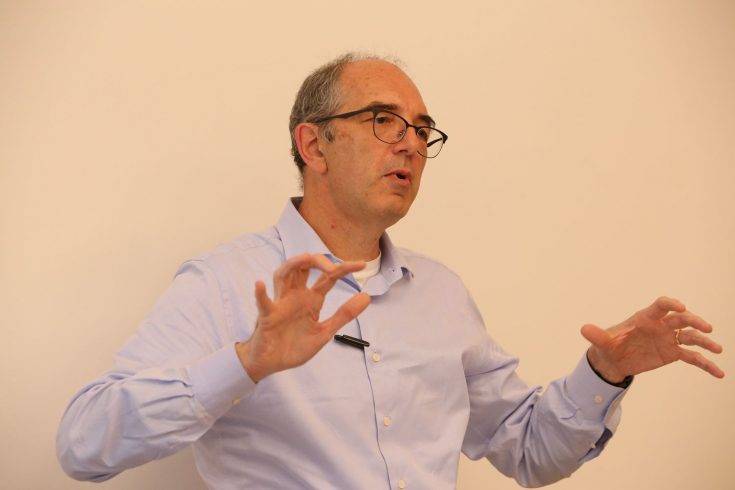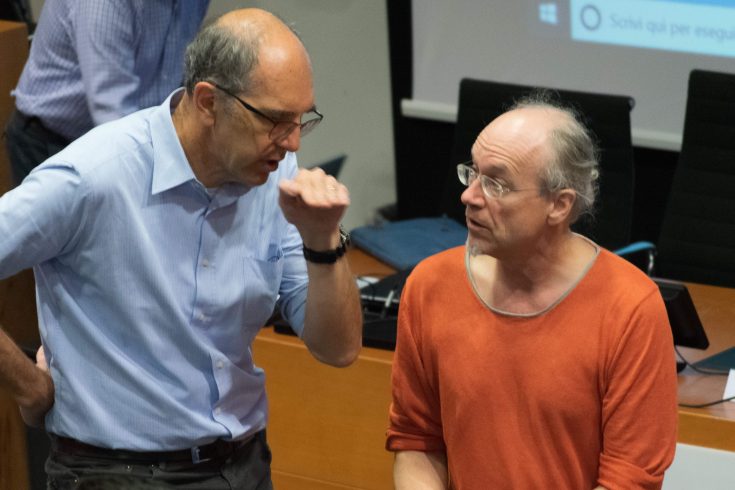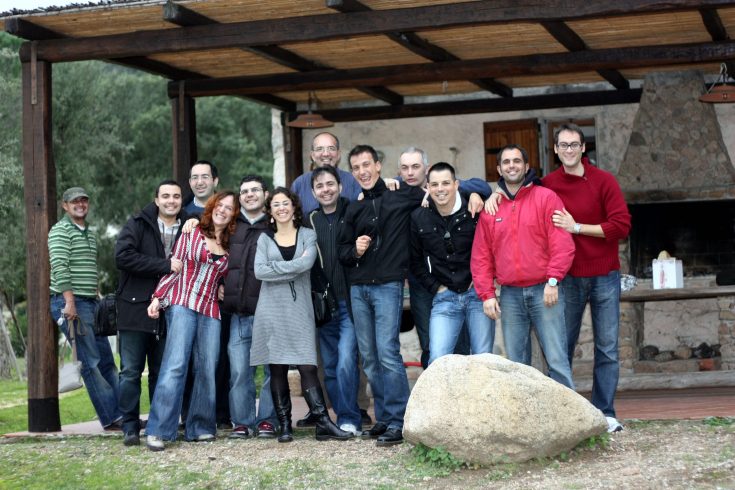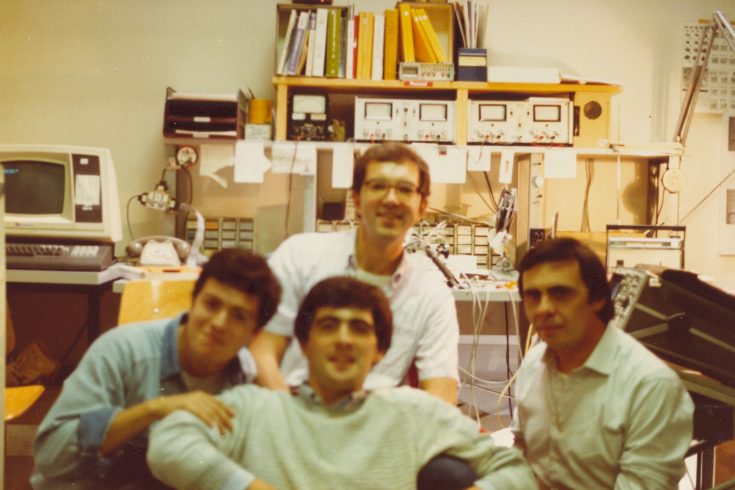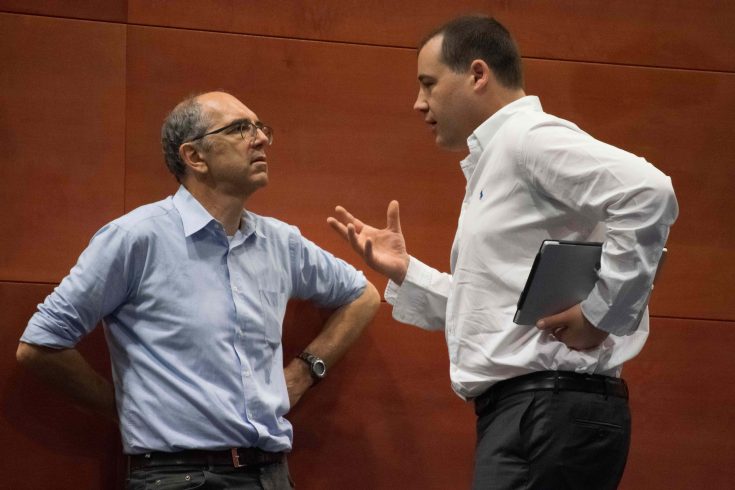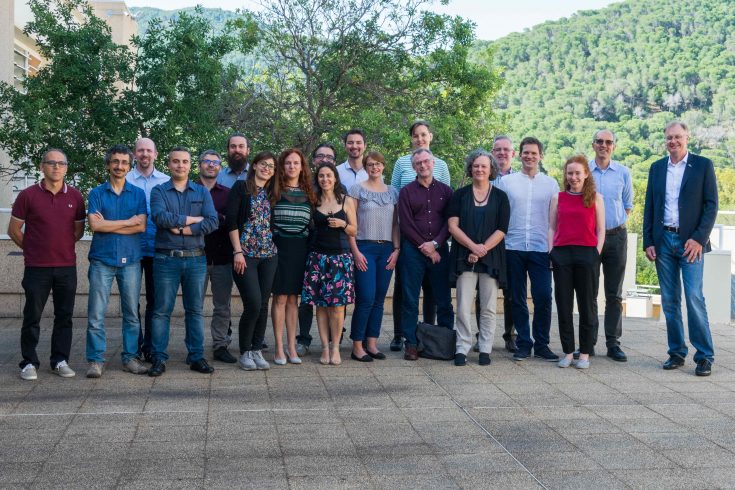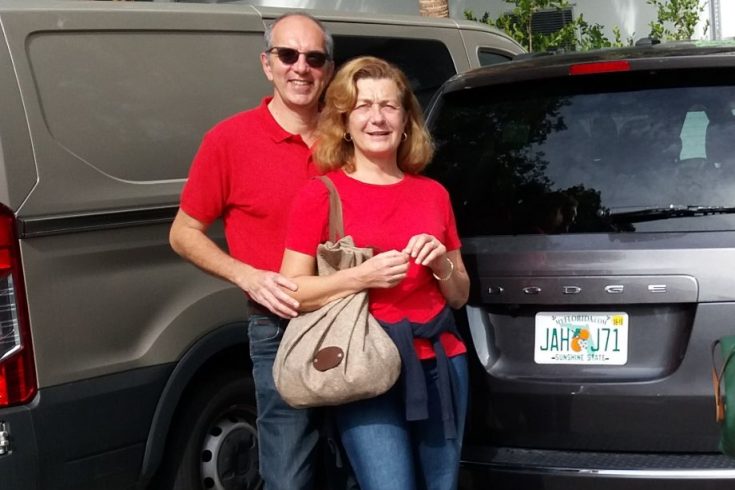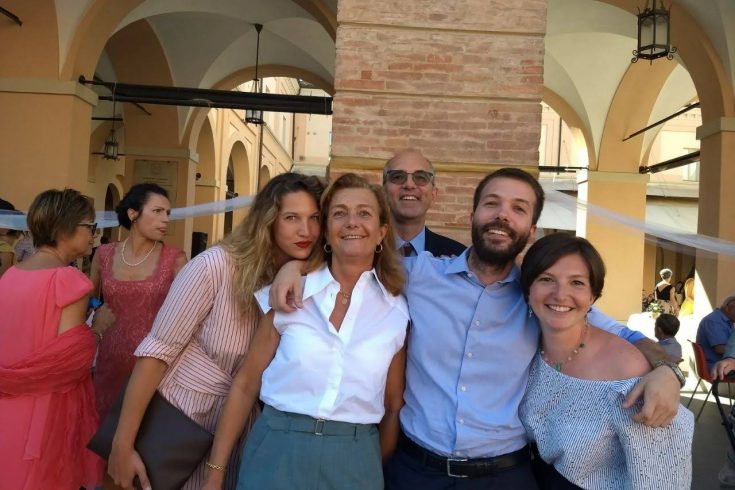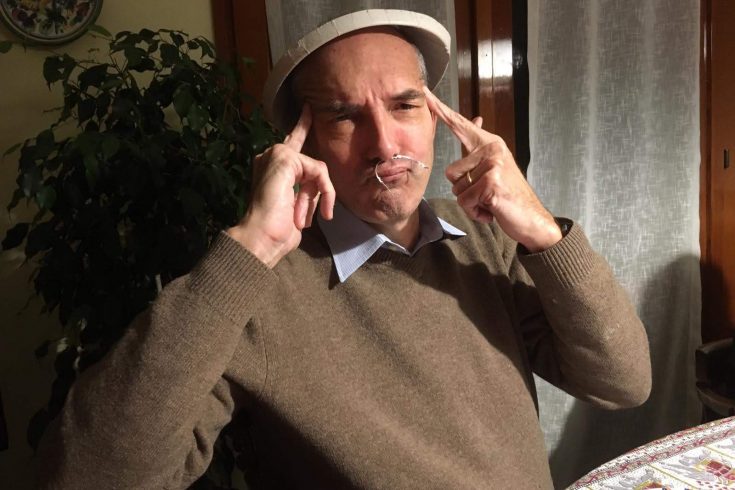Gianluigi Zanetti, the Incurable Optimist
by Fabio Maggio
...all deep, earnest thinking is but the intrepid effort of the soul to keep the open independence of her sea
– H. Melville, Moby Dick –
I don’t exactly recall my first encounter with Gianluigi. It was in Cagliari in 1992, and CRS4 had just selected and hired a large group of recent graduates, including me. Gianluigi had already been working as a research director at our center, and despite his young age, he could already boast solid experience with some of the most prestigious American research institutions, from Princeton University to Los Alamos National Laboratory.
The environment at CRS4 was highly stimulating. Led by a Nobel Prize winner for physics, all of us researchers — from the youngest ones to those who were already internationally known — were inspired by a tangible enthusiasm. This enthusiasm combined with our energy and motivation were responsible for one of those “states of grace” that sometimes occurs in people’s lives. We had ideas and the knowledge and the tools to implement them, from the brand new IBM RISC to the innovative Connection Machine, which back then had just started to emerge in popular culture (Does anybody remember the first Jurassic Park?). We were like explorers who landed in a new world and saw an infinite horizon of wonderful and unknown prairies in front of us.
Gianluigi practically witnessed CRS4’s birth, as his old friend Pietro Zanarini recalls: “When I left Geneva’s CERN at the end of 1990 to take on the challenge posed by this Sardinian research center, I asked myself who, among the people I knew, held most of the necessary skills and knowledge so I could propose sharing this new adventure with them. Gianluigi was the first person that came to mind. I’d known him since our first years at the Department of Physics at the University of Bologna. He was two years younger than me, but we would regularly bump into each other in the theoretical physicists' computer room, and that’s where our friendship started. So, about ten years after getting our degrees and leaving to gain experience abroad in two different foreign countries, Gianluigi told me he enthusiastically accepted my proposal to come to Cagliari. I was definitely happy as a friend and, at the same time, felt highly reassured to have such an authoritative figure in this professional field.
With his passion for technological innovation and his forward-thinking vision, Gianluigi was perfect for this environment. As his friend and colleague Piero Pili says, “I remember him looking over the data generated at night with apprehension and programming, with those infinite hands of his, the night runs of the fluid dynamics simulations. He would tell me what he was doing, which was completely new to me. My first memory is of a brilliant and passionate Italian researcher, who’d just come back from the U.S. with his wife Benedetta and a new-born baby girl. That passion remained unchanged”. He truly was very passionate, as shown by the many nights or weekends he spent in front of the computer, only taking a break for a delivery pizza and a beer, or by his flights from Europe to the States, which he mainly spent working on his laptop. Communicating with him was not always easy. I still completely remember the long meetings in the corner room on the second floor of the building in Via Sauro, where our discussions were earnest and lively, sometimes testy, but always loyal and frank, like the masculine discussions Solzhenitsyn was so fond of. However, as far as I remember, Gianluigi always followed his own personal style, striving to find a high-level fusion between advanced theories of applied research and the latest innovations in the field of IT and computer science, which were sometimes not even completely developed yet.
Gianluigi was a true innovator, so when the time came he didn’t hesitate to drop his newly-acquired knowledge of fluid dynamics to leap headfirst into a computational genetics program, which was an emerging and little-known discipline back then. He organized an initial tiny core of valued people (the “group that fits in the elevator”). At this stage, his interests clearly revolved around life sciences and the various research aspects related to them: from 3D advanced visualization in clinical environments1, to automated DNA analysis2, from the studies of EEG signals3 to the numeric simulation of cardiovascular flows4. His focus was often on end-users, especially doctors, so he tried to implement computational systems and platforms that they could use as operational support in their professional practice.
At the same time, Gianluigi couldn’t ignore the emerging technologies which would go on to change our daily lives so radically in the years to come, i.e. hypertexts, HTML documents, and content dissemination — including technical and scientific content — over the Web5 6. He played a major role in the dissemination of these new technologies in the Sardinian society. For instance, he contributed to the project at the Alberti High School that led to the creation of the school’s website, which was one of the very first in Italy. Gianluigi remained passionate about information technology over the years. Whenever we came across an “unknown beast”, whether it was in one of the Perl listings or the early Python programs, while wandering across the savannah of computer science, we knew we could rely on Gianluigi to identify them and offer an explanation (we’d always wonder how on Earth he could possibly know that — remember that Google didn’t exist back then!). Lidia Leoni, who was responsible for the computational platform and ICT at CRS4, remembers that Gianluigi “was certainly one of the creators of the high-performance computing infrastructure as we know it today. When we moved to Pula, he was responsible for my department. With the Cybersar project, we managed to set up a very high-speed connection with the rest of the world. This allowed us to become one of the most important computation centers in Italy”. Around the same time in the early noughties, the idea of applying the latest Internet technologies to distributed healthcare systems and to digitalize patients’ data with an electronic health record emerged7. This has become a best practice at hospitals over time and this area of research is still ongoing8.
At the end of the last century, virtual reality was being developed at an unprecedented speed and the medical sector followed suit. From the collaboration between the CRS4’s Visual Computing group and Gianluigi’s team, the IERAPSI was set up. The IERAPSI is a European project aimed at developing a tactile and visual surgery simulator9, where real 3D tomography and MR data was used to create realistic feedback on the surgeon’s virtual burr, which was simulated through a robotic arm and included features such as the masking of the area of intervention from bone powder and other debris. The result was an effective simulator for surgical training. The application of computer vision to medicine also included the usage of interactive holographic screens for viewing and navigating 50-Mpixel images (almost 15 years ago!) controlled by a cluster of GPUs10.
Over the last 10 years, Gianluigi and his group invested many resources on the new field of High-Performance Computing (HPC), which focused on the analysis of large biomedical datasets. The most intensive computational analyses required the usage of huge calculation resources, which until then had been guaranteed by the use of parallel clusters for supercomputing in which the message-passing was explicitly planned by the programmer11: it was an efficient solution, but one that showed some critical issues (for example, a limited fault tolerance) and was generally too difficult for a biologist or a bioinformatician to handle. Gianluigi and his colleagues were among the first to apply a general approach to parallelization to genomic data through MapReduce and its open-source implementation, Hadoop12, thereby developing a pioneering Python API that is still in use today. As our colleague Luca Pireddu clearly explained, “Gianluigi managed to contribute to the advancement of many fields. He started to work on the traceability and reproducibility of scientific analysis very early on. He acknowledged the potential of virtualization well before "cloud" meant more than just the one in the sky. He saw the opportunity to adopt distributed calculation techniques in scientific fields such as bioinformatics when others still only used Perl scripts and text files.”
But now I realize that I won’t be able to tell who Gianluigi really was and what it meant for us all to be around him for all these years. The most reasonable thing I can do is collect the memories of those who knew him and are now mourning for his loss here. These are people who I have had long conversations face-to-face with or who preferred, maybe as a form of consideration, to share their memories of him on the phone or via email13.
Gianluigi was a pure, honest, and sweet person. His disarming smile and his self-deprecating humor were capable of diffusing any tension and made it easy to love him. We will miss his cheerfulness and his exceptional intelligence. We would particularly like to remember his ability to anticipate future developments; to always think laterally with a different point of view; to imagine the future; to create an international scientific network. He had the curiosity to try and challenge himself to new tasks. He could inspire people with generosity, especially young people. If it is true that the only thing we leave behind is our memory in future generations — which we obtain through our actions — then there’s no doubt that Gianluigi will live on this way for a very long time, thanks to both his scientific achievements and the human connections he created over his lifetime.
CRS4, September 11, 2019
Download this article in PDF



